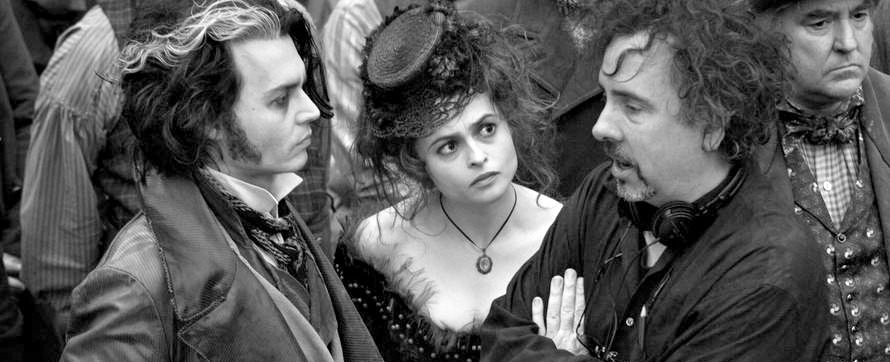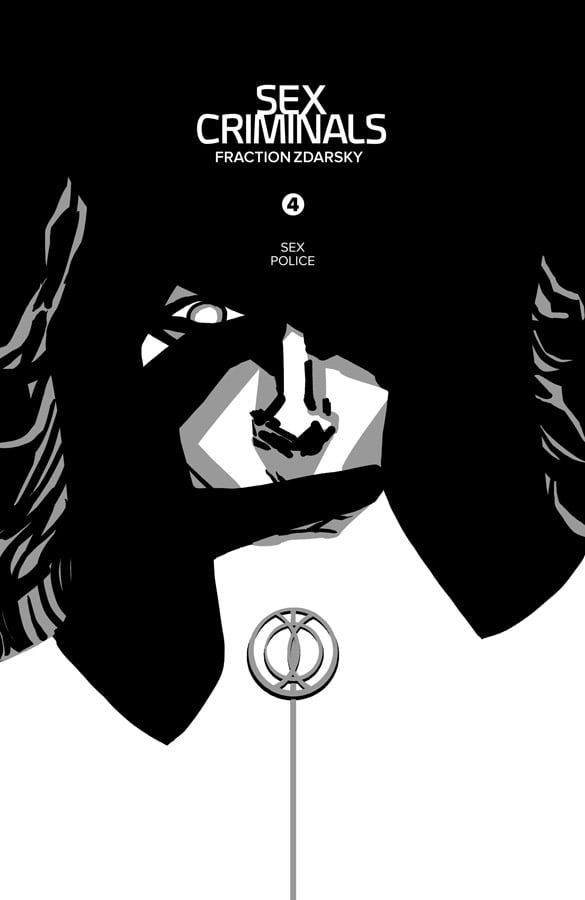
I spent my Halloween attending the tale of Sweeney Todd. Though I did go out later (I’m not a total shut-in), most of my day consisted of watching four versions of the Stephen Sondheim’s razor sharp musical Sweeney Todd: The Demon Barber of Fleet Street back to back to back to back. (There was a fifth version I’d planned to watch, but it was taken offline before I had the chance.) After watching three different stage adaptations (a 1982 recording of the 1979 original production with Angela Lansbury and George Hearn, a 2000 concert version with Patti LuPone and George Hearn, and a bootleg recording of the 2005 revival directed by John Doyle with Patti LuPone and Michael Cerveris), I arrived at my final stop: Tim Burton’s film adaptation from 2007. Having seen it, and thoroughly adored it, for several years, my revisiting of the film was, to say the least, rather disappointing.
To be fair, I fell in love with Sondheim’s Sweeney Todd by watching the film. For, at the time of its release, I thought it to be a brilliantly heartbreaking story, expressionistic and Gothic, grotesque and gorgeous. Having not been exposed to any other versions of the tale of Sweeney Todd prior, this isn’t an entirely unfair assumption. But what I failed to realize at the time, and, honestly, several times after that, was that those aforementioned qualities, that diabolical brilliance examining class, revenge, and inner demons, was written into the musical anyways and Tim Burton had done pretty much nothing to make it more interesting. He’d made the worst adaptation in Hollywood. Well, not really, but work with me here.

The barber’s blackly comic history begins with Todd taking the form of a character in a penny dreadful called The String of Pearls, published at around 1846. But this first incarnation of the character was murderous and devoid of sympathy, full of greed and antipathy. It wouldn’t be until over one hundred years later that he’d become the antihero we’ve come to love him as in Christopher Bond’s stage adaptation in 1973, illustrating him as a man bent on revenge and channeling his inner demons, which itself would be adapted by Hugh Wheeler and Stephen Sondheim in 1979, forming the iconic character as we known him now. A myriad of versions of Sweeney Todd: The Demon Barber of Fleet Street have existed, on stage and on screen, but the most recognizable now is Tim Burton’s 2007 film adaptation. Frankly, the reason for that, to me, is because it’s the only film adaptation of the musical that exists so far.
For, Burton’s adaptation is as baseline bland as one can possibly get using the material. Its saturated monochrome, lazy attempt at Grand Guignol, and grotesque CGI notwithstanding, nearly every decision made in the film is as standard and uninteresting as a run of the mill period drama.
Am I too married to the material here? That’s a fair question, especially considering I watched three previous versions immediately before watching the film. I’m inclined to say, “Not completely.” For, the most egregious things about Burton’s adaptations are the most basic elements. Staging, blocking, and general approach to scenes aren’t interesting; they are, in fact, very bland. Robbing the audience of the chance to get swept up and stuck in this unpleasant version of London, Burton seems to unconsciously build a barrier between this world and the audience, something that, ironically, Burton isn’t prone to doing. Through his Batman films and Edward Scissorhands, Burton is arguably best at creating a singularly unique environment (culled from German Expressionism and Gothic architecture, no doubt) which the audience is automatically drawn to. Those inspirations from older horror films, from the likes of the canted angles of The Cabinet of Dr. Cagliari to the chiaroscuro of Nosferatu, made his work at the very least compelling.

But what exactly is so bland about Burton’s Sweeney Todd: The Demon Barber of Fleet Street? Or, rather, why? With no prior exposure, the film is fine, even very good. But, with the exception of select few moments, every camera angle and position, every approach to every scene seems dull and deeply uninspired. Even its musical sequences are uninteresting. This might be in part to the fact that Burton’s Sweeney Todd is framed perhaps overtly as a horror film, not as a musical. The trailers and spots capitalized on its cherry colored blood and the prospect of watching Johnny Depp as the good barber slice throats and Helena Bonham Carter do her thing again.
So, most of the musical sequences have this weird aesthetic of hesitation: it’s as if Burton isn’t sure if he wants to make the sequence fit within the context of a musical, like editing to musical beats and cues, or make it more like a straight film, with a more traditional, and therefore less engaging, shot/reverse shot method. The best example of this is “The Worst Pies in London”: for part of it, the camera and the editing pays attention to the unique slamming and pounding that has always been a part of the song, with Mrs. Lovett making her meat pies, stomping on bugs, pounding dough. But before it gets too invested in this more musical approach, it retreats, opting to switch every so often between Mrs. Lovett and Sweeney’s reactions to the pie. This shot/reverse shot method isn’t an inherently bad decision, but Burton frames these characters directly in the center, obfuscating any kind of other information in the frame, wasting what could have been interesting mise en scene.
The way it screws up the best song of the musical is almost impressive if it weren’t so disappointing. For, “A Little Priest”, which is supposed to be, plain and simple, hilarious, is blood let into watching the two brood and contemplate in a relatively self-serious manner. Some creative flourishes exist in the scene, but amount to very little.

The scenes that are the few interesting moments of the film are these: the CGI London walkabout and “Johanna (Reprise)”. The former scene is often cited as one of the worst moments of the film, but it is, at the very least, a relatively provocative one. For, the grotesque artifice of that scene, as we are propelled through the poorer parts of Victorian London, seems to articulate a reading that Hal Prince, the director of the 1979 production of Sweeney Todd, had: capitalist allegory. He surmised, “It was only when I realized that the show was about revenge… and then came the factory, and the class struggle—the terrible struggle to move out of the class in which you’re born…” It’s a nice try, as the camera pointedly directs you at the poor and homeless, reveling in the inky dark lighting, the roughhewn textures, and the pavement wet with rain and sewage. And this tour immediately follows the lyrics, “There’s a hole in the world like a great black pit, and it’s filled with people who are filled with shit, and the vermin of the world inhabit it!” It is, like much of the film’s environments and settings, fake, and deliberately so, not unlike other Burton settings. Is it better or worse that Burton decided not to ground this film adaptation in realism? To what degree does creating this hyper expressionistic version of Sweeney’s world enhance the story? You can’t exactly accuse previous adaptations of the musical of wanting to make it “realistic”. Hal Prince’s 1979 adaptation focused on the aspect of the working class and London’s industrial revolution, coloring his moving sets with rust, metal, and coal. But John Doyle’s 2005 Broadway revival seemed to strip the film of any verisimilitude at all, leaving the players to play their own instruments, using very few props on the stage. This inspired use of actor/muso cuts right to the bone at what Sweeney Todd is about; the problem with Burton’s adaptation is that it cuts out all the beauty and complexity.
For even in what should be Burton’s MVP scene, there’s a lackluster quality to it for some unidentifiable reason. “Johanna (Reprise)” in pretty much all iterations of the musical is a montage of Sweeney slicing throats. For shock value, seeing the sequence for the first time is pretty grand, in the Grand Guignol way. Blood gushes, colored like tomato soup, and the film continues its identity crisis of whether it wants to be musical, period drama, or slasher. On first watch, the flow of the camera and the slick movements of Depp’s arms are, in a word, balletic. But revisiting it, there’s actually very little movement and little variation in how Depp dispatches his victims. Only two parts of the scene stand out: in one, the camera slides from left to right facing the back of a poor bugger’s head as he is killed, following with perfect timing Sweeney’s razor. In another, we see one lucky man walk back to his family, sitting in the corner, as Depp sings about his own lost family. The image is reminiscent of old daguerreotypes or framed silhouette cutouts, interestingly evoking the period of which it so desperately wants to be set in.
And, to get nitpicky, Burton’s Sweeney Todd, by unceremoniously cutting out a couple of critical songs (“Kiss Me” grounds Anthony and Johanna’s relationship, “Johanna (Turpin)” makes the Judge all the more sinister), the story is weakened as a whole. What’s interesting about Sweeney Todd the movie is actually what’s interesting about Sweeney Todd the musical. It becomes a film stripped of its complexity and its nuance, carried almost entirely by performances that seem to only understand a surface reading of the text, save for Helena Bonham Carter. Though her voice recalls Mrs. Lovett’s comment about a woman with limited wind, she is able to key into the gradations of her character in a rather restrained way. Her ethical dubiousness, her sympathy, her maternal nature, her drollness, her desire. The layers are there. But Depp in comparison is unreadable beyond rage. He looks like Michael Cerveris in the way that they imagine Todd as a ghost of his former self, but only Cerveris knows how to manifest exactly what that means, Depp only articulating that through vacant looks. Understanding that Todd is broken inside and destroying himself in this pursuit of revenge barely comes across. It’s a simplified version of the character and of the story. Even cutting out the chorus, in which the cast proclaims, “Freely flows the blood of those who moralize” ends up being detrimental, again cutting away at the musical’s intracisies. What Bonham Carter is able to do, though, is what the film fails to do: find the extremes in the beauty and in the horror, find the shades of emotion and complexity as well, and feel.




